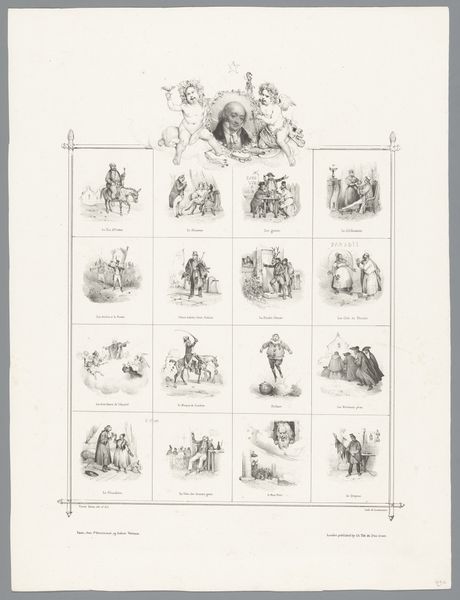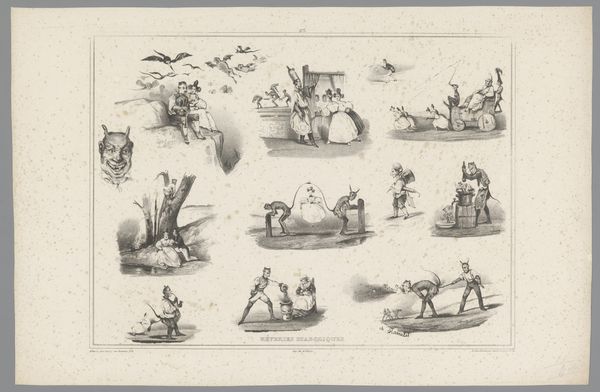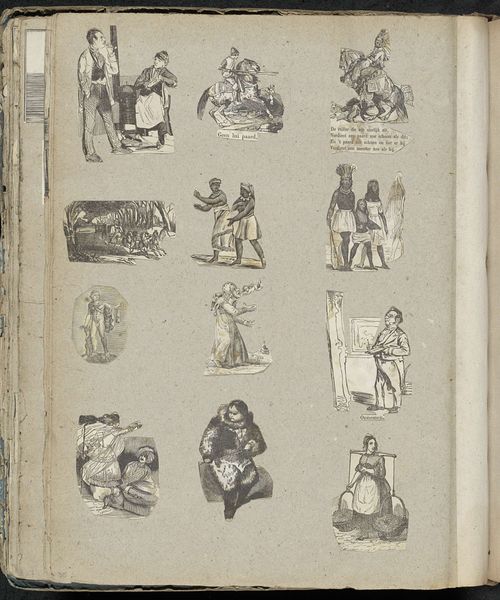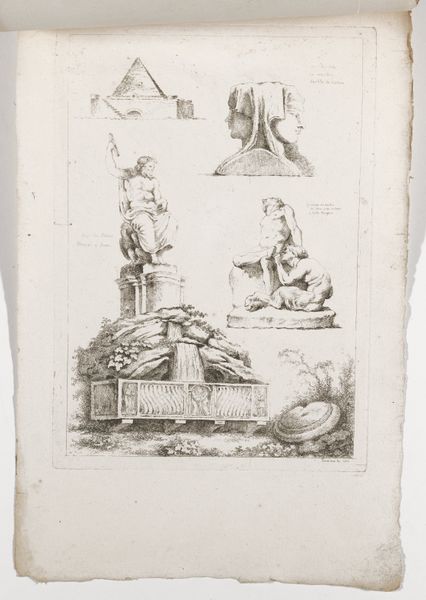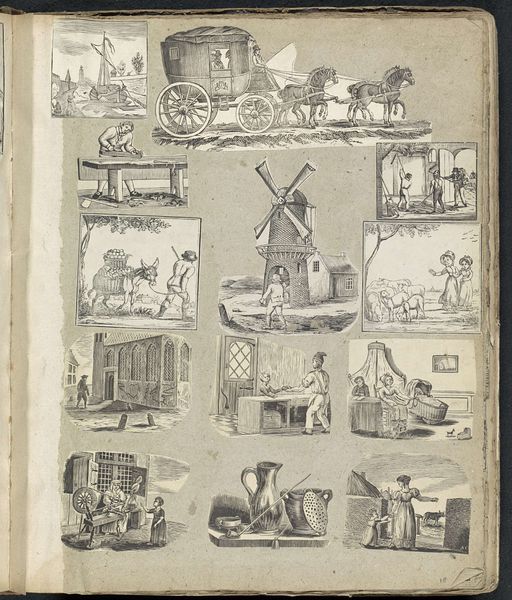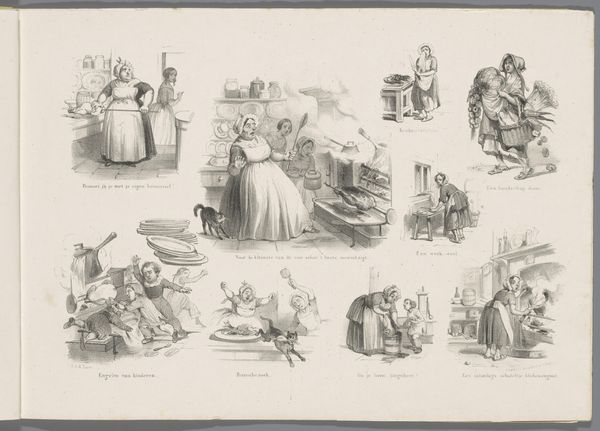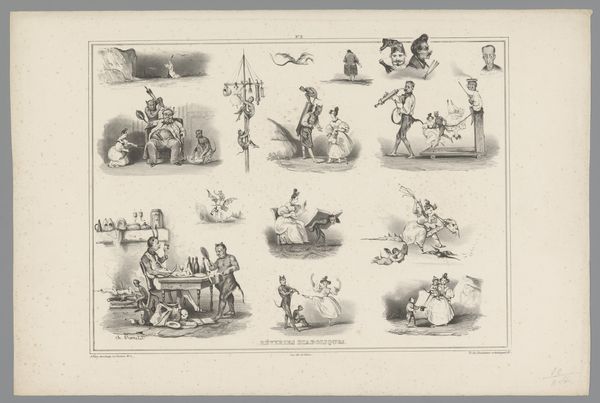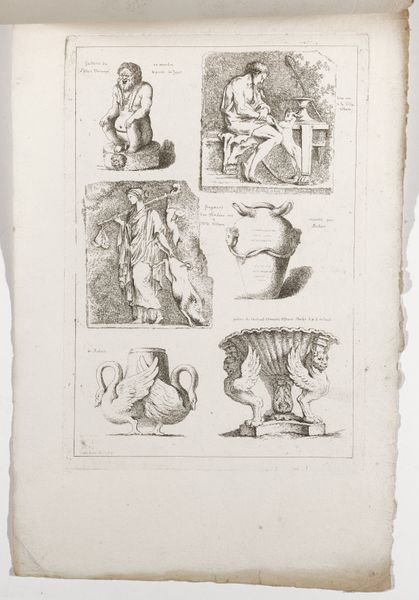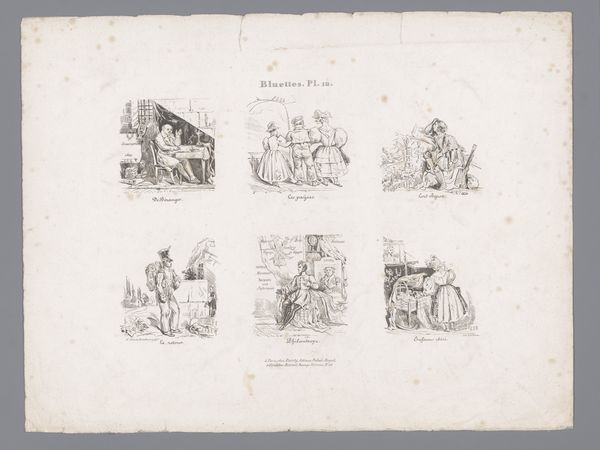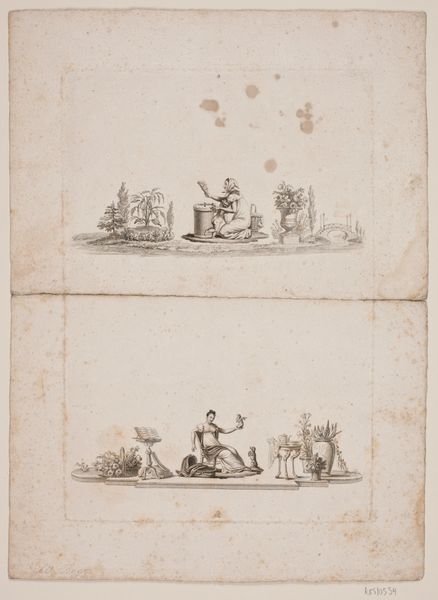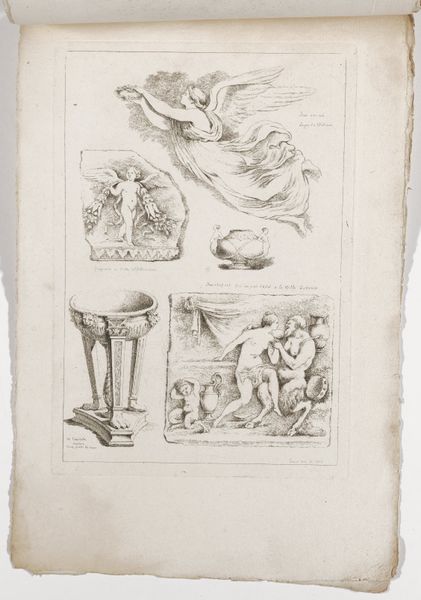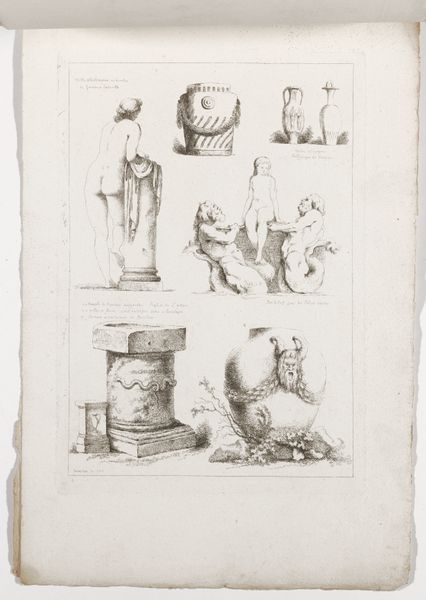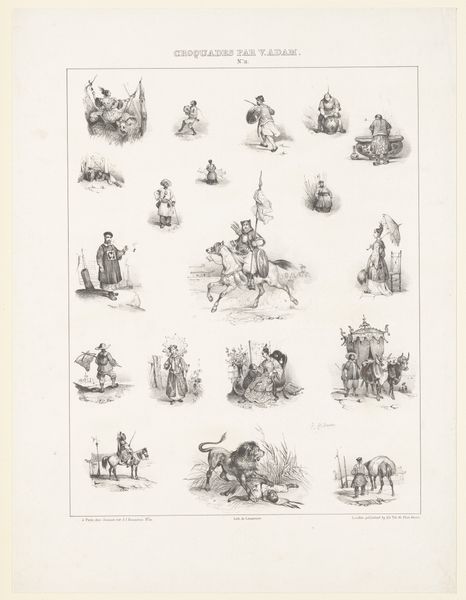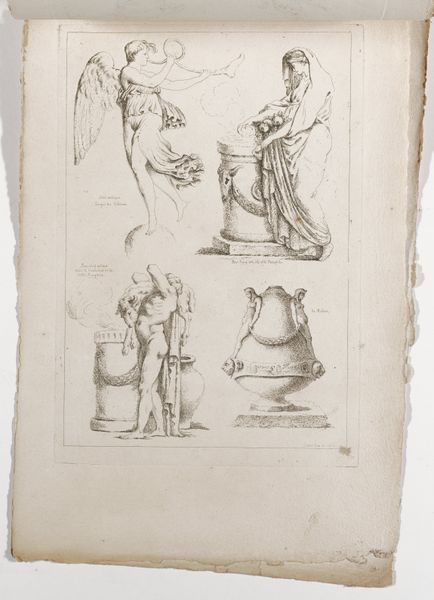
Twelve Satirical Vignettes (Le Charivari, December 10, 1832) 1832
0:00
0:00
drawing, lithograph, print
#
drawing
#
narrative-art
#
lithograph
# print
#
caricature
#
romanticism
Dimensions: Sheet: 12 in. × 8 7/8 in. (30.5 × 22.5 cm)
Copyright: Public Domain
Charles-Joseph Traviès created this lithograph, "Twelve Satirical Vignettes," on December 10, 1832, for the French newspaper "Le Charivari." The composition is structured into a grid of twelve circular vignettes, each a self-contained narrative scene rendered in stark black and white. The artist employs caricature to grotesque effect, distorting figures to amplify their satirical intent. This distortion, combined with the sharp contrast between light and shadow, creates a visually jarring experience, a world brimming with absurdity. Traviès uses the formal structure of print media to critique contemporary society, playing on the contrast between the polite conventions of portraiture and the grotesque realities of everyday life. By framing each scene within a circle, Traviès suggests a world that is both enclosed and cyclical, implying that these absurdities are endlessly repeated. It challenges the values of bourgeois society by using exaggeration and humor. These satirical images leave us with an unresolved tension, reflecting how art can destabilize established meanings and prompt ongoing re-evaluation.
Comments
No comments
Be the first to comment and join the conversation on the ultimate creative platform.
